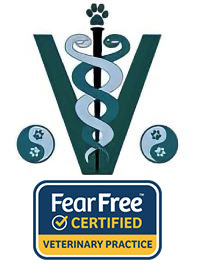Library
-
Systemic lupus is a rare disease in cats and most commonly affects Siamese, Persians, and Himalayans. It is caused by immune system dysregulation resulting in the immune system attacking different cells in the body. Skin changes can include ulceration or erosions of the face, ears, or entire body. Other systems affected include the kidneys, joints, blood cells, and the central nervous system. Diagnosis is difficult, requiring the presence of a minimum of three of the 11 criteria set by the American College of Rheumatology. Treatment involves suppressing the immune system with steroids and other immunosuppressive medications. Prognosis is guarded, as treatment to control the symptoms will be needed lifelong and in some cases may not be effective.
-
Tacrolimus ophthalmic is applied to the eye and is used off label to treat KCS (dry eye) and other immune-mediated and inflammatory conditions of the eye. Give as directed. Side effects are not common but may include irritation, eyelid twitches, or hair loss around the eye. Do not use in pets that are allergic to it or have a viral or fungal infection in the eye. If a negative reaction occurs, please call your veterinary office.
-
Tadalafil is given by mouth or injection and is used off label to treat high blood pressure in the lungs. Give as directed. Side effects may include vomiting, diarrhea, decreased appetite, or skin redness in the groin area. Do not use in pets that are allergic to it or pets that take nitrate medications. If a negative reaction occurs, please call the veterinary office.
-
Tafluprost ophthalmic is a topical medication used to reduce intraocular pressure (pressure within the eye) in dogs with glaucoma. This medication is used off label in veterinary medicine. Tafluprost ophthalmic comes in liquid drop suspension form.
-
When leaving home for vacations, pet owners are confronted with the problem of what to do with their pets. Should they take them along or leave them at home? Reviewing a summary of boarding options and travel guidelines will make the decision easier while safeguarding the well-being of your pet and providing your own peace of mind.
-
Following certain steps and offering rewards and praise instead of reprimands will put a positive spin on a dreaded task. This will help make nail trimming a more pleasant experience for both you and your dog. If all else fails, do not hesitate to contact your veterinarian for further help.
-
Normal body temperature for dogs and cats is 101 to 102.5°F (38.3 to 39.2°C). Pets with temperatures above 104°F (40.0°C) or falls below 99°F (37.2°C) need immediate veterinary care. Temperature can be taken rectally or aurally. If taking your pet’s temperature is too difficult, take your pet to your veterinarian. If your pet’s temperature remains high or low, take him to your veterinarian.
-
There are many methods and opinions described by various people to tame and train birds. This handout is designed to give some guidance to you during this process. Your patience may be strained, and you may sustain some bites, but the rewards of your new relationship with your bird will be fulfilling and long-lasting.
-
Tapeworms are parasites that infect the gastrointestinal tract of cats, other animals, and humans. Several types of tapeworms are known to infect pets, but the most common species observed in cats is Dipylidium caninum, which is transmitted through fleas. Risk factors, clinical signs, treatment, and prevention are explained in this handout. Other, less common types of tapeworms that affect cats and humans are also covered.
-
Tapeworms are parasites that infect the gastrointestinal tract of dogs, other animals, and humans. Several types of tapeworms are known to infect pets, but the most common species observed in dogs is Dipylidium caninum, which is transmitted through fleas. Risk factors, clinical signs, treatment, and prevention are explained in this handout. Other, less common types of tapeworms that affect dogs and humans are also covered.


